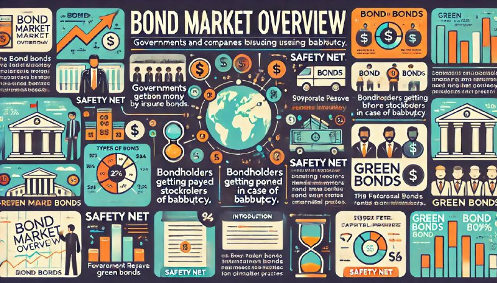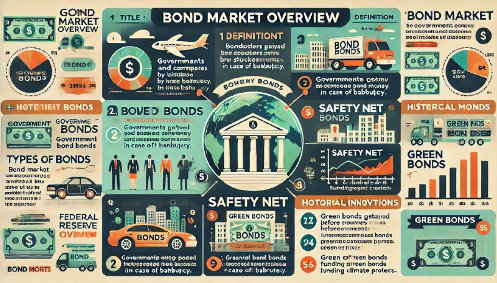
The bond market might seem a bit complex at first glance, but it’s an exciting world that plays a huge part in our economy and history. At its core, the bond market is where governments and companies go when they need to borrow money. Investors lend them this money by buying bonds, which are basically promises to pay back the loan with a little extra as a thank you, known as interest. This setup is not just a cornerstone of the financial world; it’s also been the backdrop for some of the most dramatic moments in financial history.
Bonds come in all shapes and sizes. There are government bonds, issued by countries to fund everything from schools to infrastructure projects. Then, there are corporate bonds, which companies issue when they need cash to grow or manage their debts. Municipal bonds help fund local projects like water systems and roads. There are even international bonds, where countries and companies outside the U.S. borrow money.

One of the coolest things about bonds is their safety net. Generally, they’re seen as safer than stocks because if a company goes bankrupt, bondholders get paid back before stockholders see a dime. This doesn’t mean bonds are risk-free, though. Prices can go up and down, especially when interest rates change. If rates go up, bond prices usually drop, and if rates go down, bond prices can rise.
Now, let’s hit the rewind button and talk about some of the wildest times in the bond market. The 1980s were like the Wild West for bond traders, filled with big personalities and even bigger risks. Books like “Liar’s Poker” give us a peek into this era, showing us how traders at places like Salomon Brothers were making huge bets on government bonds.
Fast forward to February 1994, and we see a different kind of drama unfold. The Federal Reserve decided to hike up interest rates, catching many off guard. This sent bond prices tumbling down, and investors scrambled as billions in value vanished overnight. This moment taught everyone just how quickly things can change in the bond world.
Another epic tale is the story of Long-Term Capital Management (LTCM), a hedge fund run by some of the smartest minds in finance. They thought they had cracked the code to risk-free profits, but the Russian financial crisis in 1998 proved them wrong. Their downfall was so severe that it nearly caused a global financial meltdown, highlighting the bond market’s impact on the world’s economy.
Today’s bond market is more diverse and dynamic than ever. Innovations like green bonds are helping fund projects to fight climate change, showing that the bond market isn’t just about making money; it can also be about making a difference.